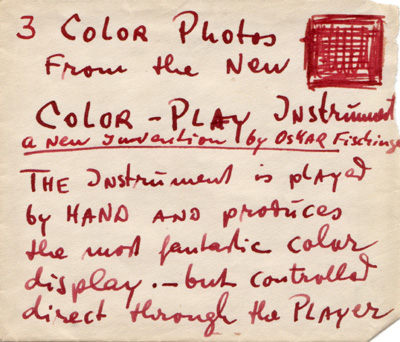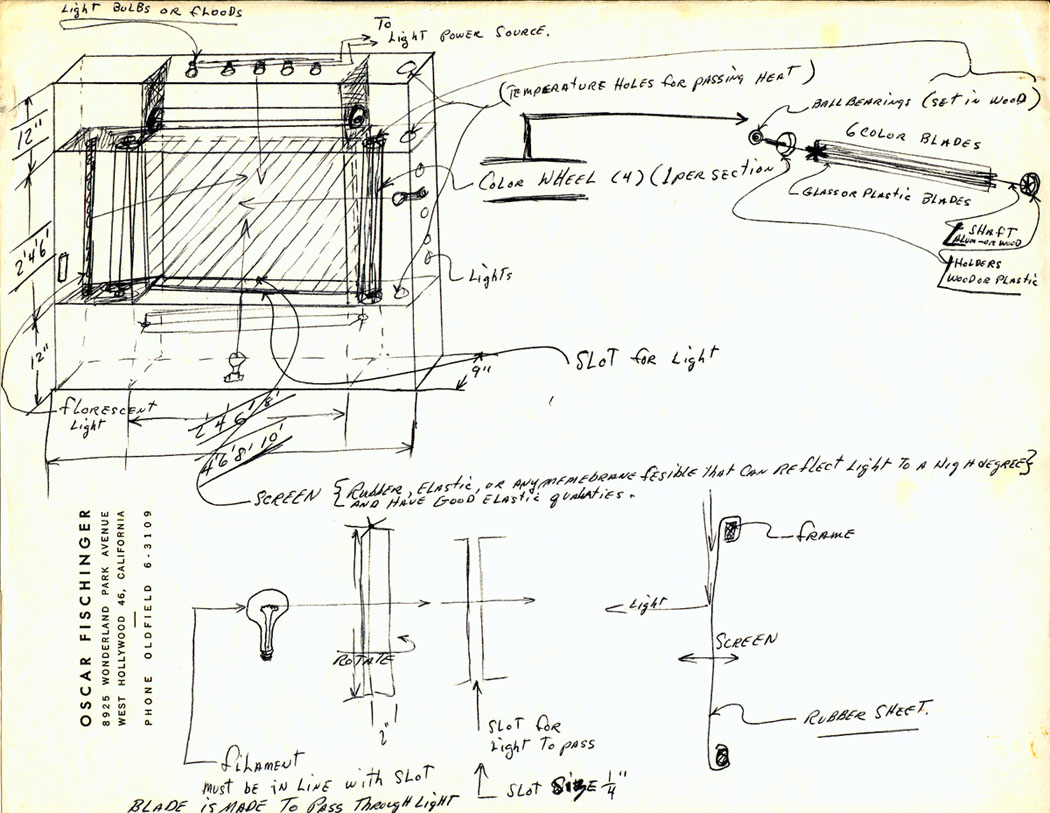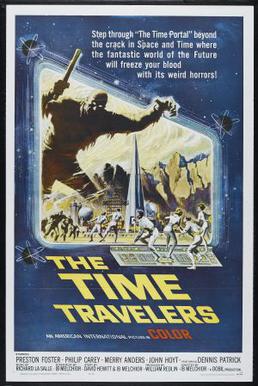
(c) Fischinger Trust.
This entry is a postscript to the one on the Cinejukebox, I just want to point out a further example of avant-garde media art technology showing up in a kitsch mass-market setting.
Starting in the late 1940’s animation and visual music pioneer Oskar Fischinger developed a new interface, the Lumigraph, that allowed coloured light to be played expressively in the way one would play a musical instrument. The device did not output sound but was often performed with musical accompaniment. Fischinger hoped to eventually make the Lumigraph available commercially, but as with so many other experimental technologies, this never happened. The following excerpt from the Wikipedia indicates how the Lumigraph was played:
The instrument produced imagery by pressing against a rubberized screen so it could protrude into a narrow beam of colored light. As a visual instrument, the size of its screen was limited by the reach of the performer. Two people were required to operate the Lumigraph—one to manipulate the screen to create imagery, and a second to change the colors of the lights on cue.
This seems to be a very early example of a touch-screen, or at least tactile input device, that are currently changing the way people use computers. I will not write in detail about the Lumigraph today, but it certainly deserves a closer look and I plan a more detailed entry sometime in the future. For the time being, here is Fischinger’s sketch of the Lumigraph (click for larger image on the web site of the Oskar Fischinger Trust):

(c) Fischinger Trust.
What I would like to make a note of here is that, as with the music visualizer in the Cinejukebox, the innovative Lumigraph shows up in a highly kitsch cultural offering of the day, Ib Melchior’s 1964 B-grade science-fiction movie, The Time Travelers.

An excerpt from The Time Travelers, with the scene in which the Lumigraph (called Lumichord in the film) appears, is currently on YouTube:
The Lumichord appears in the film as a “love machine” – not part of Oskar Fischinger’s intentions. It appears that the actress does not touch the controls during the performance, which is likely mimed.
There is an account of the Lumigraph, “Writing Light”, by Elfriede Fischinger, wife of Oskar, online at the Center for Visual Music. A short video clip of a 1969 performance on the Lumigraph by Mrs. Fischinger is available on the CVM’s Vimeo channel:
Lumigraph Film (c. 1969) by Elfriede Fischinger (excerpt) from CVM on Vimeo.
[1] William Moritz, Optical Poetry: The Life and Work of Oskar Fischinger, John Libbey Publishing (2004).
For more material about the Lumigraph start with a brief look at the Wikipedia article, then proceed to the materials online at the Oskar Fischinger Trust as well as the Fischinger pages at the CVM.
N.B. None of the images or video clips in this post is hosted by our server. The first resides at the CVM and the second at the Fischinger Trust. Clicking either will open the images on the original sites.


